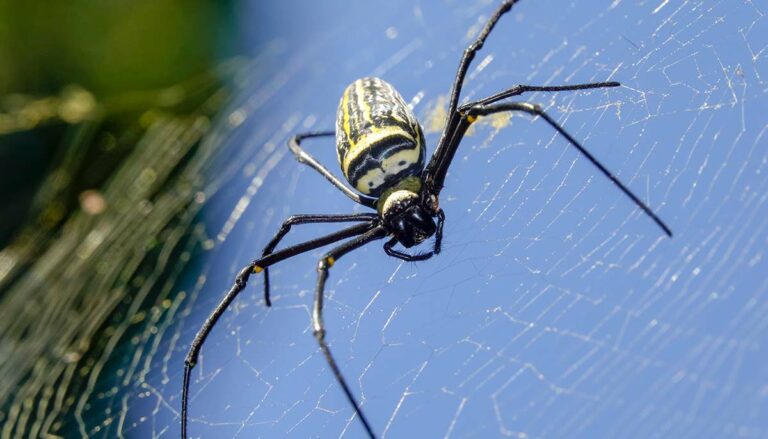The US border has been infiltrated by a different kind of non-native invaders – giant spiders, that are already in the southeastern United States, and experts expect the venomous species to spread rapidly across the East.
Giant spiders expected to invade Eastern US, then the Northeast
Like something right out of the movie Arachnophobia, a giant species of spiders known as Jorō spiders, or Trichonephila clavata, that first invaded the southeastern United States a decade ago, are now expected to rapidly invade the eastern US and ultimately the Northeast as well, CNN reports.
The spiders are shiny black with yellow-striped legs and abdomen and can grow up to 4 inches in length – about the size of the palm of your hand or larger.
Venomous: But are they dangerous to humans?
Jorō spiders are venomous. When they want to eat other insects for a meal, they can use the venom to poison their prey.
However, experts say the spider’s fangs are incapable of breaking human skin and, therefore, don’t pose a threat to humans.
Venomous vs. poisonous vs. Toxic
It’s also worth clarifying the terms “venomous” and “poisonous” which are not interchangeable, according to the Department of entomology at UC Riverside. They state that “venomous” is an anatomical description and means the organism has the structures to convey venom. Similarly, “poisonous” is also an anatomical description that denotes an organism producing a compound in a gland. Therefore, the correct term for having a negative effect on the targeted organism is “toxic.”
Therefore, Jorō spiders are both venomous and poisonous but are incapable of delivering the toxin to humans.
How did the spiders get into the US?
Jorō spiders are native to southeastern Asia. They speculate they hitched a ride on a shipping container into the US about a decade ago, arriving in the southeastern part of the country. Entomologists say they use a technique called “ballooning,” where newly hatched spiderlings generate thin silk threads that they use as parachutes to travel using wind. They then hitch a ride to new locations.
Researchers believe that for every spider we detect being transported, it’s likely ten more invade detection.
Coming to a town near you?
Experts believe the spiders will soon invade the eastern coast of the US. However, some expect them to migrate even further.
Research has shown that the spiders can also survive in colder climates, which is why they believe they will eventually spread to the northeast.





